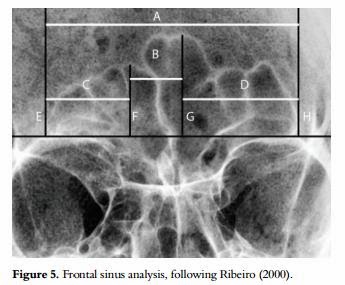Odontologia

- Dental Human Identification Using Radiographic Records Of Oral Implant Placement – A Case Report
Abstract Dental identification of charred bodies consists of a complex procedure, making necessary the investigation of especially unique dental identifiers. In parallel, Implantology has become more accessible worldwide. Consequently, clinical and...
- Importance Of The Comparative Anatomy In Forensic Anthropology – Case Report
AbstractIntroduction: In forensic sciences, reconstructive victim profile is a commonly used procedure to provide individual data in cases of complex human identifications. In forensic anthropology, valuable data are obtained from skeletal and dental...
- The Evolution And Development Of Cranial Form In Homo Sapiens
AbstractDespite much data, there is no unanimity over how to define Homo sapiens in the fossil record. Here, we examine cranial variation among Pleistocene and recent human fossils by using a model of cranial growth to identify unique...
- Anatomical Variations In The Permanent Mandibular Canine: Forensic Importance
Abstract.Introduction: The uniqueness of dental morphology plays an important role in Forensic Odontology, especially for human identifications, in which a single tooth can provide information for dental identification. Objective: To...
- Comparative Study Among Dentistry Undergraduates And Forensic Odontology Postgraduate Students Through Smile Photographs For Human Identification
Abstract. Introduction: The execution of forensic odontology technique for human identification depends on the existence of dental files produced ante-mortem (dental records, clinical notes, radiographs or dental casts). However, when...
Odontologia
Radiographic alterations of the frontal sinus morphology according to variations of the vertical angle in posteroanterior radiographs of the skul
ABSTRACT. The frontal sinuses play a highly relevant role in comparative human identification processes. Since forensic radiology is a branch in the forensic sciences, adequate radiological analysis of the frontal sinuses is essential for comparative human identifications. The current study investigates radiographic morphological changes in the frontal sinuses according to vertical angle distortions in posteroanterior (PA) radiographs. A standard PA radiograph of the skull of an adult was obtained. Eight addition PA radiographs were taken at different vertical angles. Frontal sinuses were analyzed qualitatively and quantitatively according to Ribeiro´s (2000) technique. Both qualitative and quantitative analyses revealed significant image distortions. Further, overlapping anatomical structures were reported when PA radiographs were analyzed in negative angulation distortions (from -10° to -40°). Positive and negative angular distortions up to 20º slightly affected the qualitative morphological analysis. However, 10° positive and negative distortions provided a significant interference in quantitative analysis and impaired the measuring process. Most forensic techniques for the analysis of frontal sinuses comprise measurements of morphological distances. Distortions of approximately 10° or over in vertical angulation of cranial PA radiographs should be avoided so that more accurate comparative human identifications could be achieved. Article published in: Acta Scientiarum. Health Sciences Maringá, v. 36, n. 1, p. 113-117, Jan.-June, 2014.
Download full text.
Author: [email protected]
loading...
- Dental Human Identification Using Radiographic Records Of Oral Implant Placement – A Case Report
Abstract Dental identification of charred bodies consists of a complex procedure, making necessary the investigation of especially unique dental identifiers. In parallel, Implantology has become more accessible worldwide. Consequently, clinical and...
- Importance Of The Comparative Anatomy In Forensic Anthropology – Case Report
AbstractIntroduction: In forensic sciences, reconstructive victim profile is a commonly used procedure to provide individual data in cases of complex human identifications. In forensic anthropology, valuable data are obtained from skeletal and dental...
- The Evolution And Development Of Cranial Form In Homo Sapiens
AbstractDespite much data, there is no unanimity over how to define Homo sapiens in the fossil record. Here, we examine cranial variation among Pleistocene and recent human fossils by using a model of cranial growth to identify unique...
- Anatomical Variations In The Permanent Mandibular Canine: Forensic Importance
Abstract.Introduction: The uniqueness of dental morphology plays an important role in Forensic Odontology, especially for human identifications, in which a single tooth can provide information for dental identification. Objective: To...
- Comparative Study Among Dentistry Undergraduates And Forensic Odontology Postgraduate Students Through Smile Photographs For Human Identification
Abstract. Introduction: The execution of forensic odontology technique for human identification depends on the existence of dental files produced ante-mortem (dental records, clinical notes, radiographs or dental casts). However, when...
